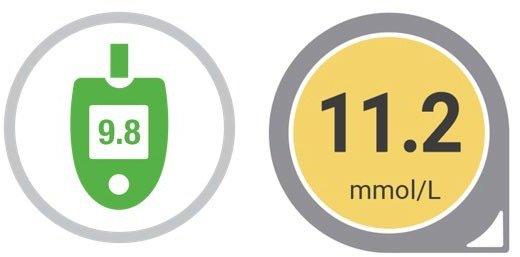Dexcom G6 Readings VS Meter Values
The Using Your G6 Guide is a valuable resource for both new and experienced users, and some may continue using their blood glucose meter (BGM) to make diabetes treatment decisions until they know exactly how Dexcom G6 Continuous Glucose Monitoring (CGM) System works best for them. Their meter only gives them one number, if they test twice (using the same or a different meter), it may give them another number, and their Dexcom G6 gives them a third. But what do they do with all those numbers?

The test
The blood glucose test your doctor does is considered a more accurate glucose number than any products you use at home. Both BGM and Dexcom CGM Systems are compared to that doctor’s test to measure accuracy in clinical studies. They are not compared to each other. Additionally, keep in mind that CGM systems measure the interstitial glucose that deviates slightly from the current blood glucose due to physiological reasons.
Because of this, the Dexcom CGM Systems readings and meter value are unlikely to be exactly the same number, but they should be close. A difference between blood glucose readings and Dexcom CGM readings within 1.1 mmol/L for readings lower than 4.4 mmol/L and up to 20% for readings higher than 4.4 mmol/L is within the medically acceptable range that is the industry standard.
Factors that may impact a mismatch
Accuracy data is published in the Using Your G6 Guide.
Factors that may contribute to a temporary mismatch between a Dexcom G6 sensor reading (interstitial fluid) and a meter value (blood glucose) are:
- Use of incorrectly stored or expired test strips
- Hands not washed thoroughly with soap and water and dried
- A newly inserted Dexcom G6 sensor – after the first 24 hours, the readings should more closely match a meter value performed (with good technique)
- Rapidly changing glucose – glucose changes in the blood first and then the interstitial fluid. The Dexcom G6 measures glucose in the interstitial fluid and may be a bit behind a meter value when glucose is changing rapidly (two arrows up or down). The match will improve when blood glucose is changing more slowly
- Pressure on the sensor – when something (or someone) is pressing on the sensor, it can affect the Dexcom G6 readings. Relieving the pressure should improve the match
Calibration
Some sensor systems require users to enter a finger prick value obtained from a meter to “calibrate” the system at startup and improve sensor accuracy.
Calibration of the Dexcom G6 with a meter is not routinely needed or required. If a user chooses to calibrate by entering a meter value, their Dexcom G6 readings may become better matched to the meter but it could make the match to the laboratory result either better or worse.
When calibrating, make sure:
If a user chooses to calibrate, it should be entered within 5 minutes of taking a finger prick. Users should not calibrate when the sensor does not display a sensor glucose reading.
For a complete set of instructions, please refer to the Using Your G6 Guide.
1 Shah VN, et al. Performance of a factory-calibrated real-time continuous glucose monitoring system utilizing an automated sensor applicator. Diabetes Technol Ther. 2018;20(6):428-433.
LBL-1003748 Rev001
